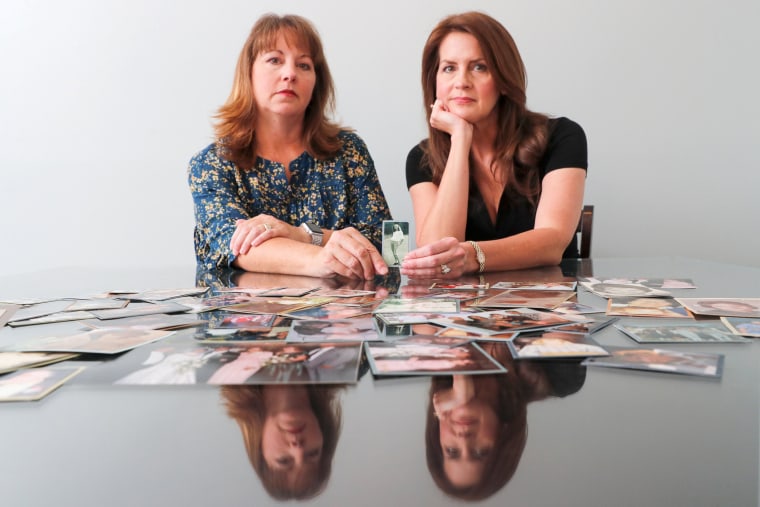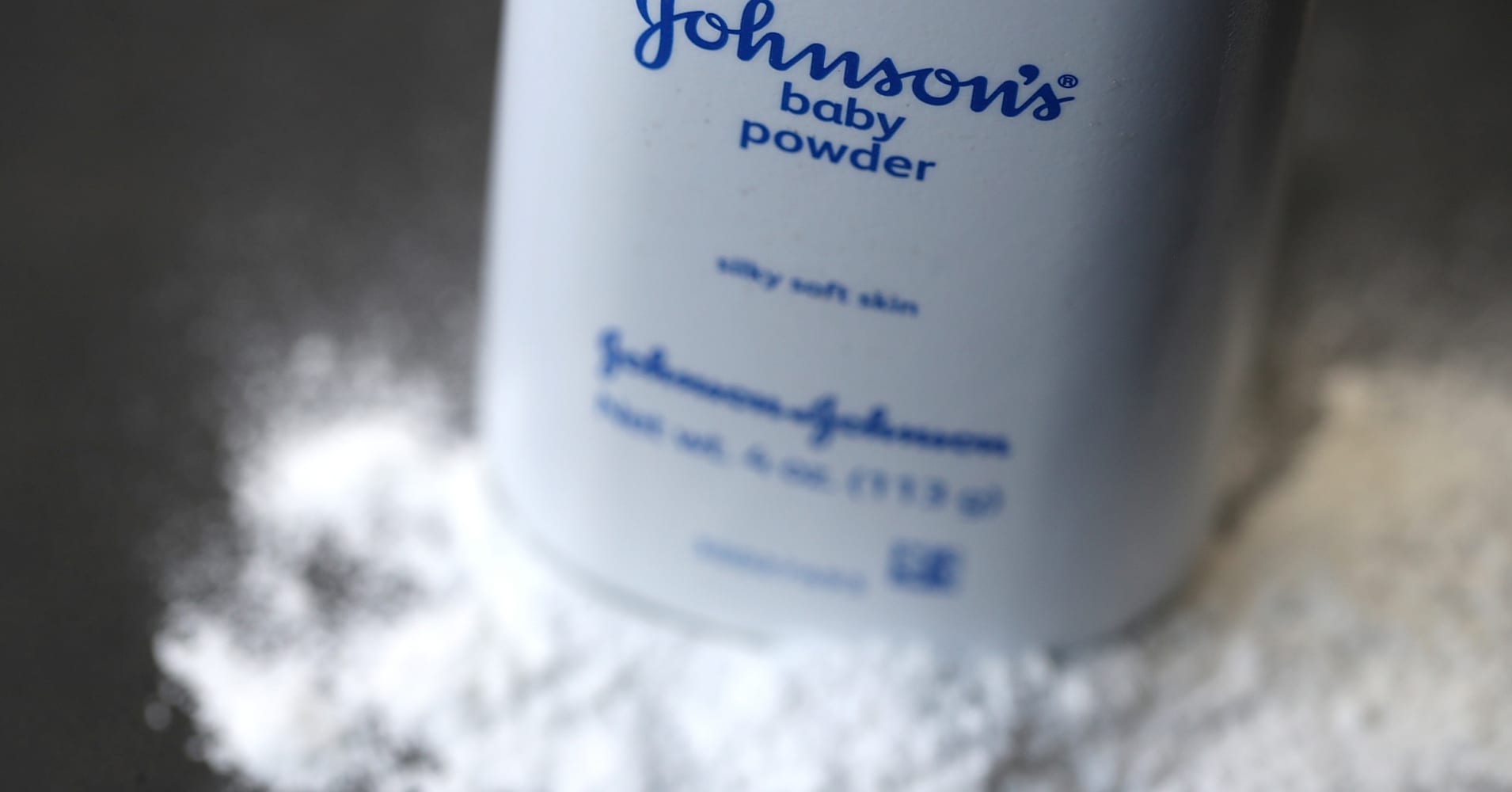Darlene Coker knew she was dying. She just wanted to know why.
She knew that her cancer, mesothelioma, arose in the delicate membrane surrounding her lungs and other organs. She knew it was as rare as it was deadly, a signature of exposure to asbestos. And she knew that it afflicted mostly men who had inhaled asbestos dust in mines and industries such as shipbuilding that used the carcinogen before its risks were understood.
Coker, 52, had raised two daughters and was running a massage school in Lumberton, a small town in eastern Texas. How had she been exposed to asbestos? “She wanted answers,” her daughter Cady Evans said.
Fighting for every breath and in crippling pain, Coker hired Herschel Hobson, a personal-injury lawyer. He homed in on a suspect: the Johnson’s baby powder that Coker had used on her infant children and sprinkled on herself all her life. Hobson knew that talc and asbestos often occurred together in the earth, and that mined talc could be contaminated with the carcinogen. Coker sued Johnson & Johnson, alleging that “poisonous talc” in the company’s beloved product was her killer.

J&J denied the claim. Baby powder was asbestos-free, it said. As the case proceeded, J&J was able to avoid handing over talc test results and other internal company records Hobson had requested to make the case against baby powder.
J&J didn’t tell the FDA that at least three tests by three different labs from 1972 to 1975 had found asbestos in its talc — in one case at levels reported as “rather high.”
Coker had no choice but to drop her lawsuit, Hobson said. “When you are the plaintiff, you have the burden of proof,” he said. “We didn’t have it.”
That was in 1999. Two decades later, the material Coker and her lawyer sought is emerging, as J&J has been compelled to share thousands of pages of company memos, internal reports and other confidential documents with lawyers for some of the 11,700 plaintiffs now claiming that the company’s talc caused their cancers — including thousands of women with ovarian cancer.
A Reuters examination of many of those documents, as well as deposition and trial testimony, shows that from at least 1971 to the early 2000s, the company’s raw talc and finished powders sometimes tested positive for small amounts of asbestos, and that company executives, mine managers, scientists, doctors and lawyers fretted over the problem and how to address it while failing to disclose it to regulators or the public.
The documents also depict successful efforts to influence U.S. regulators’ plans to limit asbestos in cosmetic talc products and scientific research on the health effects of talc.
A small portion of the documents have been produced at trial and cited in media reports. Many were shielded from public view by court orders that allowed J&J to turn over thousands of documents it designated as confidential. Much of their contents is reported here for the first time.
In 1976, as the U.S. Food and Drug Administration was weighing limits on asbestos in cosmetic talc products, J&J assured the regulator that no asbestos was “detected in any sample” of talc produced between December 1972 and October 1973. It didn’t tell the agency that at least three tests by three different labs from 1972 to 1975 had found asbestos in its talc — in one case at levels reported as “rather high.”
Most internal J&J asbestos test reports Reuters reviewed do not find asbestos. However, while J&J’s testing methods improved over time, they have always had limitations that allow trace contaminants to go undetected — and only a tiny fraction of the company’s talc is tested.
The World Health Organization and other authorities recognize no safe level of exposure to asbestos. While most people exposed never develop cancer, for some, even small amounts of asbestos are enough to trigger the disease years later. Just how small hasn’t been established. Many plaintiffs allege that the amounts they inhaled when they dusted themselves with tainted talcum powder were enough.
In two cases earlier this year — in New Jersey and California — juries awarded big sums to plaintiffs who, like Coker, blamed asbestos-tainted J&J talc products for their mesothelioma.
A third verdict, in St. Louis, was a watershed, broadening J&J’s potential liability: The 22 plaintiffs were the first to succeed with a claim that asbestos-tainted baby powder and Shower to Shower talc, a longtime brand the company sold in 2012, caused ovarian cancer, which is much more common than mesothelioma. The jury awarded them $4.69 billion in damages. Most of the talc cases have been brought by women with ovarian cancer who say they regularly used J&J talc products as a perineal antiperspirant and deodorant.
At the same time, at least three juries have rejected claims that baby powder was tainted with asbestos or caused plaintiffs’ mesothelioma. Others have failed to reach verdicts, resulting in mistrials.
J&J has said it will appeal the recent verdicts against it. It has maintained in public statements that its talc is safe. It has blamed its losses on juror confusion, “junk” science, unfair court rules and overzealous lawyers looking for a fresh pool of asbestos plaintiffs.
"Plaintiffs’ attorneys out for personal financial gain are distorting historical documents and intentionally creating confusion in the courtroom and in the media,” Ernie Knewitz, J&J’s vice president of global media relations, wrote in an emailed response to Reuters’ findings. “This is all a calculated attempt to distract from the fact that thousands of independent tests prove our talc does not contain asbestos or cause cancer. Any suggestion that Johnson & Johnson knew or hid information about the safety of talc is false.”
J&J declined to comment further for this article. For more than two months, it turned down repeated requests for an interview with J&J executives. On Dec. 8, the company offered to make an expert available. It had not done so as of Thursday evening.

J&J, based in New Brunswick, New Jersey, has dominated the talc powder market for more than 100 years, its sales outpacing those of all competitors combined, according to Euromonitor International data. And while talc products contributed just $420 million to J&J’s $76.5 billion in revenue last year, baby powder is considered an essential facet of the company's carefully tended image as a caring company — a “sacred cow,” as one 2003 internal email put it.
“When people really understand what’s going on, I think it increases J&J’s exposure a thousandfold,” said Mark Lanier, one of the lawyers for the women in the St. Louis case.
The persistence of the industry’s view that cosmetic talc is asbestos-free is why no studies have been conducted on the incidence of mesothelioma among users of the products. It’s also partly why regulations that protect people in mines, mills, factories and schools from asbestos-laden talc don’t apply to babies and others exposed to cosmetic talc — even though baby powder talc has at times come from the same mines as talc sold for industrial use. J&J says cosmetic talc is more thoroughly processed and thus purer than industrial talc.
Until recently, the American Cancer Society accepted the industry’s position, saying on its website: “All talcum products used in homes have been asbestos-free since the 1970s.”
After receiving inquiries from Reuters, the ACS in early December revised its website to remove the assurance that cosmetic talcs are free of asbestos. Now, it says, quoting the industry’s standards, that all cosmetic talc products in the United States “should be free from detectable amounts of asbestos.”
Coker never learned why she had mesothelioma. She did beat the odds, though. Most patients die within a year of diagnosis. Coker held on long enough to see her two grandchildren. She died in 2009, 12 years after her diagnosis, at age 63.
Coker’s daughter Crystal Deckard was 5 when her sister, Cady, was born in 1971. Deckard remembers seeing the white bottle of Johnson’s baby powder on the changing table where her mother diapered her new sister.
“When Mom was given this death sentence, she was the same age as I am right now,” Deckard said. “I have it in the back of my mind all the time. Could it happen to us? Me? My sister?”


